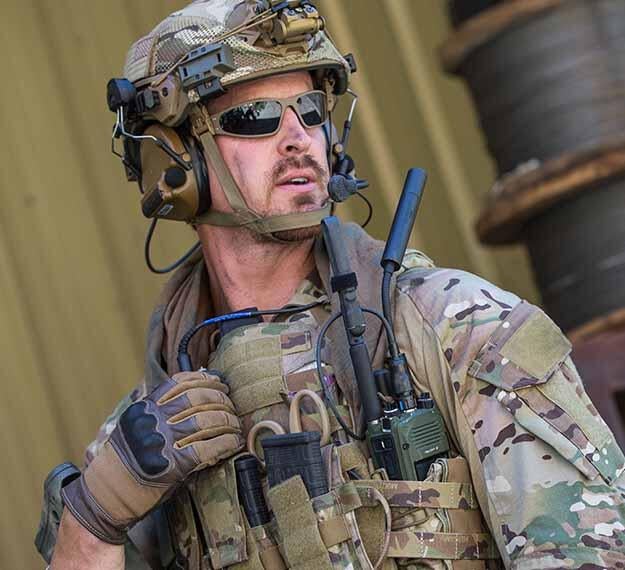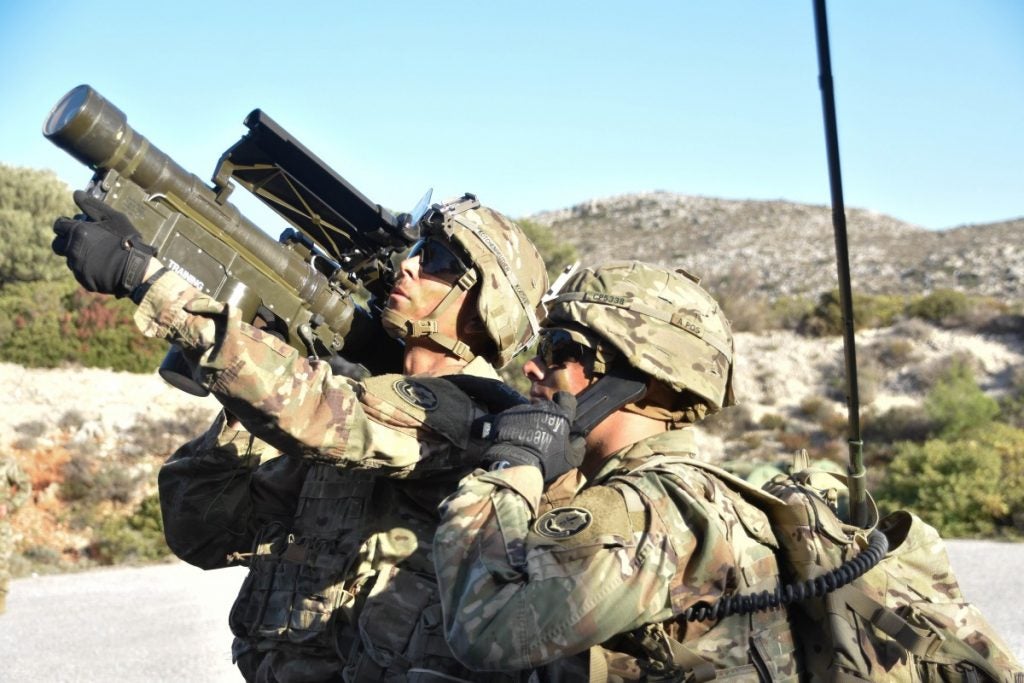INTERVIEW: Raytheon Share Details on New Stinger/Javelin LWCLU Integration
On 11 March, Raytheon Missiles and Defense announced that it successfully conducted a firing test of a Stinger missile integrated with the next-generation a Javelin Lightweight Command Launch Unit, or LWCLU. Overt Defense reached out to Raytheon to learn more about this development and spoke to Mr. Tommy Boccardi, Project Manager for Strategy and Growth, Javelin Weapon Systems.
Mr. Boccardi explained the impetus for the integration of Stinger and LWCLU came from the warfighter. The Army needed a better way to target Unmanned Aerial Vehicles (UAVs) with man portable air defense missiles (MANPADS). Integration of Stinger with LWCLU was determined to be one of the best ways of improving Stinger performance due to the advanced thermal and optical sensors and the computer and display systems in LWCLU being able to readily accept and display targeting data.

In that aspect, the Stinger/LWCLU combination represents almost a quantum leap in technology over the current Stinger setup. Currently, man-portable Stinger teams receive warning of incoming aircraft via voice message over radio, which gives them a heading and approximate distance. The Stinger gunner must manually orient himself towards the oncoming aircraft or drone and then aiming with ironsights at a target. Then the gunner activates the coolant and battery (BCU), which gives him a 45 second window to lock and fire on the target. The gunner is informed via audio tone of the quality of the lock before firing.

The LWCLU totally updates that process into what might be the most integrated MANPADS firing interface in development. The Stinger/Lightweight CLU integration kit (SLK) includes a digital compass and a datalink to a soldier’s tactical radio. This radio was an Army provided AN/PRC-163 (which has only been adopted for SOF) in tests, though Raytheon also claims the link is compatible with the current standard issue AN/PRC-152 and 148. This datalink allows the approximate location of a target aircraft or drone to be displayed within the Lightweight CLU display. Arrows inside the display guide the gunner to the proper direction of the contact, using data from an inclinometer and the digital compass. The standard brackets inside the LWCLU used for Javelin firing are also replaced by a colored circle that represents the seeker’s approximate acquisition arc. An estimated “quality of lock” is provided to the Stinger gunner via the color of the circle, with red, amber, and green representing no lock, partial lock, and good lock respectively. This allows the Stinger gunner to judge the quality of lock without wasting precious seconds of BCU activation. IFF interrogation is handled through the standard Stinger system, although IFF data can also be passed through the datalink from radars.
Together, the system looks to be incredibly potent. Via datalink cues, the gunner during the system test was able to acquire small UAVs at a range of 5 kilometers. Depending on the target’s aspect and signature, an engagement at that range could be possible, though the Janes release said engagement occurred at 1-2 km during the test. The capability to engage small UAVs with MANPADS at such ranges may prove critical in future conflicts against peer or near-peer opponents, as combat experience in Nagorno-Karabakh proved when infantry teams in trenches were practically at the mercy of the combination of Bayraktar TB2 drones and Harop loitering munitions. With a Stinger/LWCLU combination combined with localized anti-air radars to provide warning and targeting data, an infantry team may be able to effectively employ Stingers against a similar threat combination.
Mr. Boccardi was also asked if the Stinger might be integrated onto other Javelin firing posts, like the CROWS-J on Stryker armored vehicles. He answered that Raytheon was not looking into that at the moment, due to the Stinger/LWCLU project primarily being upgrading the MANPADS capability for the dismounted soldier and a relative lack of interest from the Army. It’s also possible that Raytheon is not so interested in this “next step” as a pure Stinger/CROWS integration was demonstrated before in 2017, but didn’t go anywhere with the Army.
/arc-anglerfish-arc2-prod-mco.s3.amazonaws.com/public/APNUH4ZHZZHQLLISROPELWENLA.jpg)
However, the demonstration is quite an impressive feat of feeding targeting data all the way down to the individual soldier. The ability to feed datalink information directly through the CLU also has massive potential in the LWCLU’s Javelin firing role. Although not fully possible at the moment due to a lack of an integrated digital compass in the LWCLU, in the future LWCLUs may be able to receive targeting information on ground targets from UAVs and battlefield ground radars to give Javelin gunners advanced warning of oncoming ground vehicles and targeting data on obscured or distant targets.

